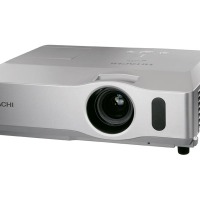Although presentations have taken a back seat in the last few years to make room for social media and email marketing, they are slowly coming back onto the scene. Holding a seminar or a presentation is a great way to really reach those who are serious about buying your product or service. Talking with someone or with a group of people face to face allows you to play off reactions and sell something easier using hand gestures and presentations. Of course, holding a successful presentation means having a successful projector.

Whether you’re a teacher or a small business owner looking to talk with a group of people, finding the right projector is a necessity. It seems overwhelming at first, but once you understand more about projectors it’s much easier to make a decision when it comes time to buy. There are really four types of projectors that someone would consider today:
- LCD (Liquid Crystal Display) – This is probably the most popular type of projector technology. This technology uses three glass panels inside the projector to create an image on a screen. In general, an LCD projector produces a quality image.
- DLP (Digital Light Processing) – This technology takes light and reflects it off of spinning mirror to create the images that your audience will see. These projectors are typically very lightweight and are as easy as just plugging into an outlet.
- LCOS (Liquid Crystal On Silicon) – This is a reflective technology that uses liquid crystals as opposed to mirrors to create an image. This is one of the newest types of projectors, so it’s not yet very popular.
- Digital – These are the types of projectors that you would see if you were going to watch a college lecture. Digital projectors display what is on a computer screen onto a projector screen, so this works well for your most basic projector needs.
When it comes to choosing which projector is right for you, it’s important to really consider your needs. If you are going to be giving a lot of presentations, you may want to opt for a projector with a better picture or one that is a bit more permanent. If you think you’ll only need the projector once or twice, go for something more portable.
Top 5 Features to Consider Before Buying a Projector
Once you know type of projector will work best for you, it’s time to consider a few of the following features:
- Brightness – Brightness is measured in lumens, so when you’re shopping remember: the higher the lumens the brighter the image projected. Most projectors use about 1000 lumens, give or take, but it’s important to consider the room you will be using the projector. A room with a lot of light will need more lumens than a dark room. If you’re going to be giving presentations with a lot of large photos, the more lumens the better.
- Resolution – For those who aren’t the most technologically savvy, it’s easy to think that brightness and resolution is the same thing. However, resolution actually refers to the number of pixels that make up an image. If you are going to have people sitting close to your screen, the higher the pixels the better. Higher resolution gives you better detail, but it is more expensive.
- Weight – This is one aspect of a projector that many people forget. If you’re going to be traveling with your projector, try and find one that is lightweight. Those that have never before bought projects sometimes think that they are inevitably heavy, but this is not the case. Some projectors are designed to be portable, so make sure you take this into consideration.
- Contrast Ratio – A contrast ratio deals with blacks and whites. If an image doesn’t have a very black black color, then the images could be seen as washed out. Some would argue that this is the most important aspect of a projector because you can really tell the difference—even if you don’t know anything about projectors. In other words, the higher the contrast ratio, the better.
- Lens Shift – This allows you to move the projector without causing the image to change and look sideways or crooked in any way. Most LCD projectors have this feature, but only the top of the line DLP projectors have lens shift as an option.
It’s a good idea to visit a technology store and talk with an expert about some of these different features before making a purchase. Projectors can sometimes cost you into the thousands of dollars, so you want to make sure you ask the right questions before buying one or a few projectors for your business.
Do you own a projector that you think works well? What features would you consider “must-have” features? Let us know in the comments!
Photo Credit: projectorpeople.com
